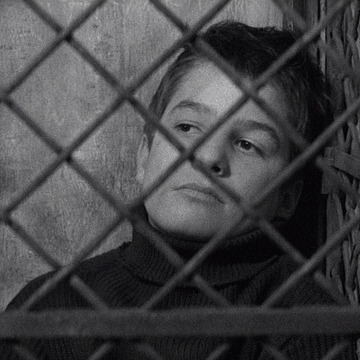I am—or at least was/might be—an academic working in the areas that tend to come in for ridicule with the general public when they look at what academics are up to—areas like film, popular culture, theory, cultural studies. When pundits take cheap shots at MLA conference papers with goofy, hip or sexy titles (“Deciphering Victorian Underwear”), or at professors for wearing mango-colored Comme des Garçon jackets—as if that kind of sartorial style was incompatible with intellectual seriousness or merit—it is most often in the areas and on topics that are close to my work and interests.
I tend to view these attacks—”look at what the eggheads are up to now”—as motivated, at least in part, by anti-intellectualism (unfortunately all too prevalent in the USA) or by politics. More often than not, it seems, the academics and work being attacked or made fun of are fairly obviously “leftish” or liberal in their perspectives, engagements or implications. Marxist literary theory, feminist history, queer studies—when a paper is held up to ridicule or put forward as an example of the waste or tendentious of university studies, there’s a more than average chance it’s from a discipline or tendency such as these.
But as critical as I am of most attacks on interesting academic work in the areas of theory and popular culture, even I have difficulty stifling a chortle at some of the things I run across:

“A very glamorized picture, that”: images of Scottish female herring workers on romance novel covers
Author: Jane Liffena
Abstract
This article analyses portrayals of Scottish female herring workers on the covers of romance novels and investigates how far these representations conform to, or subvert, the genre of romantic fiction. Covers are analysed to establish whether they accurately portray Scottish female herring workers at their labour. If romanticisation of the women’s working role is evident, the ways in which this manifests itself and the possible reasons for this romanticisation are examined. Composition of images and the mise-en-scne of covers are analysed, as well as aspects concerning the narratives of the novels, and elements of herring processing work that are noticeably absent in the depictions are also considered. These elements excluded from the covers are examined through theory relating to the abject in an attempt to ascertain whether the covers potentially provide models of female empowerment for the reader. (via Social Semiotics.)
Social Semiotics, Volume 18, Issue 3 September 2008 , pages 349 – 361
Okay—this is the sort of thing I’ve been known to do: a kind of ideological critique of a particular thread of popular culture, in this case, analyzing the representations of women—in particular, “female herring workers”—on book covers. A number of issues are probably germane—attitudes toward that particular kind of labour and women blue-collar labour in general, and the way that women are depicted more generally—though the article seems particularly focused on the accuracy of the portrayal.
All these issues, including the question of accuracy, are absolutely run-of-mill in academic work: useful, relevant, serious topics for academic inquiry. This is not, at least as far as can be determined from the abstract, a marginal or dubious piece of fluff masquerading as scholarship. Representations of women are heavily studied, and some terrific work has been done on romance novels, work of interest and relevance to literary studies, popular culture and women’s studies in general, not just to people interested in that particular topic.
Further, the whole issue of Scottish female herring workers is not as outré as it might seem at first glance to people not already in the know. The herring industry is very important in and around Scotland, and Scottish women, perhaps unexpectedly, have historically comprised a significant proportion of the herring industry’s workforce [eg, here and here]. And the life and work of the “herring girls”—or clann nighean an iasgaich—is a topic for tourism and historical interest [here].
But still, serious and genuine as this piece of scholarship no doubt is, I did indeed chortle when I read the title…
For more…
- Weird Universe – brief discussion of the article
- ingentaconnect ‘A whirling vortex of women’: The Strikes of Scots Herring Women …. – article in Labor History Review
- Herring Girls – the Ness Historical Society
- Walking through Scotland’s history.
- Frumpy or Chic? Tweed or Kente? Sometimes Clothes Make the Professor – The Chronicle of Higher Education
- Deciphering Victorian Underwear, And Other Seminars – NYTimes.com – the article in which “mango wool-and-silk Comme des Garcons blazer” is cited
Filed under: Cultural Studies, academics, history, humor



